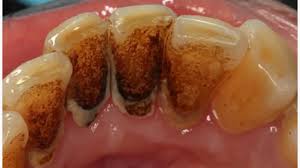Maintaining oral health is an essential part of overall well-being. Among various dental issues, one that often goes unnoticed until it becomes severe is the formation of a calculus bridge. This condition can lead to significant dental problems if not addressed promptly. This article delves into the causes, symptoms, and treatment of calculus, offering insights into how to prevent and manage this dental issue.
What is a Calculus
A calculus, also known as tartar bridge, refers to a hard, yellow or brown layer of mineralized dental plaque that forms between and over the teeth. Unlike regular plaque, which can be removed with proper brushing and flossing, calculus is hardened and requires professional dental cleaning to remove. When the calculus accumulates and extends across multiple teeth, it forms a bridge-like structure, hence the name.
Advances in Dental Technology
The field of dentistry has seen significant advancements in technology, making the detection and treatment of calculus more effective and less invasive. Digital imaging and intraoral cameras allow dentists to identify problem areas with greater precision, facilitating early intervention. Moreover, the development of laser technology has revolutionized periodontal treatment, offering a less painful and more efficient way to remove calculus and treat gum disease.
The Role of Genetics and Health Conditions
While lifestyle choices and oral hygiene play significant roles in the formation of calculus, genetics and underlying health conditions can also influence susceptibility. Some people may naturally produce more plaque due to genetic factors, while others might have conditions such as diabetes, which can affect saliva production and composition, thereby promoting calculus formation. Understanding your genetic predispositions and managing health conditions effectively are crucial steps in mitigating the risk.
Impact of Calculus on Overall Health
The presence of a calculus bridge can have far-reaching implications beyond dental health. Research has increasingly shown a link between oral health and systemic conditions such as heart disease, stroke, and respiratory issues. Bacteria from the mouth can enter the bloodstream, potentially leading to inflammation and infection in other parts of the body. This connection underscores the importance of maintaining good oral hygiene and seeking prompt treatment for dental issues.
The Importance of Education and Awareness
Raising awareness about calculus and their potential consequences is crucial for encouraging preventive measures and timely treatment. Many individuals are unaware of the seriousness of this condition until they experience significant discomfort or dental problems. Public health campaigns, educational programs, and regular consultations with dental professionals can help bridge this knowledge gap.
Calculus in Children and Adolescents
While calculus are more commonly associated with adults, children and adolescents are not immune to this dental issue. Poor oral hygiene habits, a diet high in sugary foods and drinks, and lack of regular dental check-ups can all contribute to the formation of calculus in younger individuals. Early education on proper brushing and flossing techniques is essential to instill good habits that can last a lifetime. Parents and guardians should ensure that children receive regular dental care, including professional cleanings, to prevent the development of calculus.
The Psychological Impact of Dental Health
The appearance of a calculus can also have psychological and social effects. Dental issues often lead to self-consciousness and reduced confidence, impacting social interactions and overall quality of life. Individuals with noticeable calculus might avoid smiling or speaking freely, leading to social withdrawal and decreased mental well-being. Addressing these issues through proper dental care can significantly enhance one's self-esteem and social comfort.
The Role of Dental Insurance in Managing Calculus
Access to dental insurance plays a significant role in the management and prevention of calculus. Many individuals avoid seeking regular dental care due to the high costs associated with treatments. Dental insurance can alleviate this financial burden, making preventive care and professional cleanings more accessible. By covering routine check-ups and cleanings, insurance plans encourage individuals to maintain regular dental visits, thereby reducing the likelihood of calculus formation.
Future Directions in Research and Treatment
The future of dental care promises exciting advancements in the understanding and treatment of calculus. Ongoing research aims to uncover more about the biological mechanisms behind plaque and calculus formation, potentially leading to new preventive measures and treatments. Innovations such as targeted antimicrobial therapies and improved dental materials could revolutionize the way we address dental plaque and calculus.
Conclusion
A calculus bridge is more than just a cosmetic concern; it poses significant risks to oral health if left untreated. Understanding the causes and symptoms of calculus can help individuals take preventive measures to avoid their formation. Regular oral hygiene practices, combined with professional dental care, are key to preventing and managing calculus. By maintaining a diligent oral care routine and seeking timely dental treatment, you can ensure a healthy, calculus-free smile.





Comments